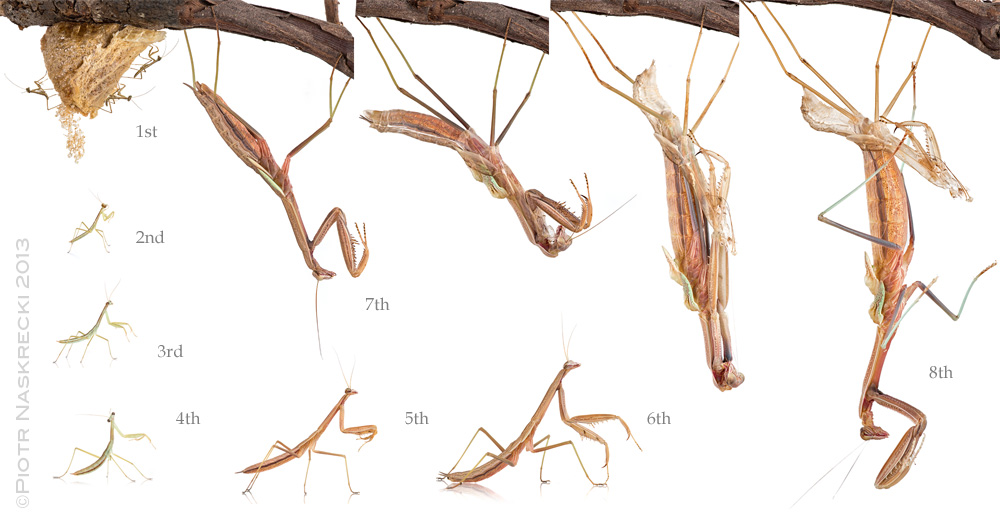It is amazing huh?
Neat picture Thomas! Wonder if I could use that for Bugfest in some way?
It really is and why I had to share it again.

Not sure, but you can contact Piotr Naskrecki, there is a email address on his
about me page.
I had a feeling I was overreacting :wacko: this is obviously my first mantis. It's just so hard to imagine how all that mantis could fit in that little exoskeleton! I'm glad it's all normal though, now I'll just have to learn how to deal with a mantis that can fly!
Not a problem it's good to ask questions.

As mentioned females usually are too heavy and generally have too small of wings to fly, but males like to fly if they can. If your not sure of the sex you can
see this link on how to make the identification, or post/link a photo.
Ok so I was really amazed by molting too and I looked it up.
...
from wikipedia - ecdysis
so one of the main ways that they inflate themselves is through capillary action. This is the same mechanism that the human penis uses to stiffen.
the part I am still confused by is where all of the liquid comes from for the capillary action. How can the whole organism inflate at once?
Wikipedia is a site to avoid for any knowledge as it is usually flat-out wrong, and so full of inconsistencies to the point of being harmful. Anyone can edit the information with a free account, and it seems the more correct something is the less likely it will be on there (I know as I tried to fix many issues myself at one point to see with plenty of reference links). Also at many colleges and universities if a research paper or article cites Wikipedia in the reference for the paper, the professors will typically fail it on the spot for the use of such a bad cite source (I know that firsthand from two universities I attended).
In this instance though some of it is correct from Wikipedia. Read about the molting process from
Cornell University, and
NCBI (National Center for Biotechnology Information) which is a useful site for finding scientific articles/papers on many various topics.
The links I gave explain it better, and do not allude to magical invisible liquids that appear from nowhere (at least for terrestrial arthropods). Also beware that most mantids take about a hour to preform the molting process, as they do it slowly in small sections - allowing them to inflate slowly as they emerge as it isn't done all at once. They do use air in the process too, as at times I've witnessed air-bubbles in portions inflating (especially in the head - it's really a unique experience).
Here is the process explained from the Cornell University PDF...
As the insect grows and the need to molt arises, hormones are released in the insect’s body which signal the process to begin. There are two major layers of the exoskeleton. The outer layer is more ridged while the inner layer is more elastic. The inner layer is broken down and the nutrients reabsorbed for recycling into the new layer. The upper layer remains in place because it is too ridged to be recycled and also it must protect the insect until the new exoskeleton is ready.
Then the new exoskeleton is secreted so that it is positioned in the space the old exoskeleton and the living cells of the insect. The soft new exoskeleton is wrinkled up and already bigger that the old exoskeleton. It is ready for expansion once the old exoskeleton is shed.
The insect expands its body by in taking water or air (depending largely on whether they live in an aquatic or terrestrial environment), or by using concentrated pressure of its blood. This expansion cracks the exoskeleton typically along the back of the thorax of insects. Insects slide themselves out through this division.
Once freed of the old exoskeleton, the soft insect intakes more water or air to puff itself up to be larger than its previous size to allow for growth. With the insect in this expanded state, the new exoskeleton begins to harden. Once the exoskeleton is hardened to the intended level, the molting process is comp




